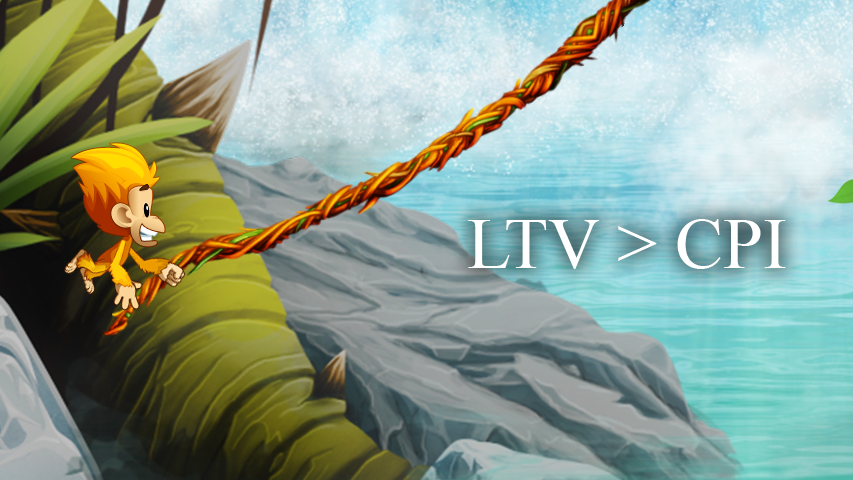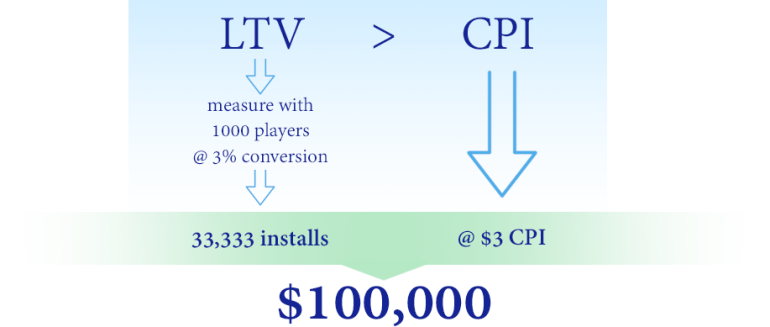The author of Benji Bananas Adventures, Torulf Jernström, explained in his blog why you will need at least $ 100 thousand to find out whether a shareware mobile game works or not.

LTV > CPI
LifeTime Value is more [should be more] Cost Per Install. This is the golden formula.
If it is fair to you, you can spend $3 on advertising to get the installation, and then wait for the moment when the player spends $4 in the game, pocket $1, and spend the remaining $3 on another buyer. In short, you have a cycle that prints money. But in order to make sure it works, you need at least $ 100 thousand. And here’s why:
Let’s start with LTV. Calculating LifeTime Value is not a trivial task. Here you can get a general idea of how this can be done (careful, there are a lot of formulas!).
The difficulty for an independent developer is that it requires a significant amount of traffic to verify the reliability of the numbers. Let’s say you need 1000 paying users to do this. Let’s say that among all your players, 3% are paying (this is a great value). Thus, in order to get a sample of 1000 paying players, you need 33 thousand downloads of the application (1000/0.03).
Another component of our calculation is Cost Per Install, CPI. It varies depending on the genre of the game and the country in which you advertise it. In order to get good paying users, you need to choose a developed country for testing. Western Europe, Canada and Australia are good candidates. But these countries are also not cheap. The average CPI in them can be about $3.
Now we are ready for calculations: 33 thousand downloads multiplied by $3… we get $100 thousand. And this is only for a single LTV measurement with sufficient accuracy. If you are not a god of f2p monetization (or just a lucky one), you will need to repeat this procedure several times to optimize everything.
And this is exactly the situation when an indie developer needs either a good publisher or venture capital.
A source: http://pocketphilosopher.net

